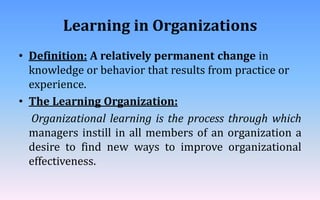The document discusses the significance of understanding individual behavior within organizations, addressing various factors that impact performance, such as personal, psychological, environmental, and organizational variables. It covers theoretical perspectives on personality and behavior, including various models and their implications for management practices. Notable theories include Freud's psychoanalytic theory, Bandura's social learning theory, and humanistic approaches, illustrating the complexity and diversity of human behavior in organizational contexts.


















































